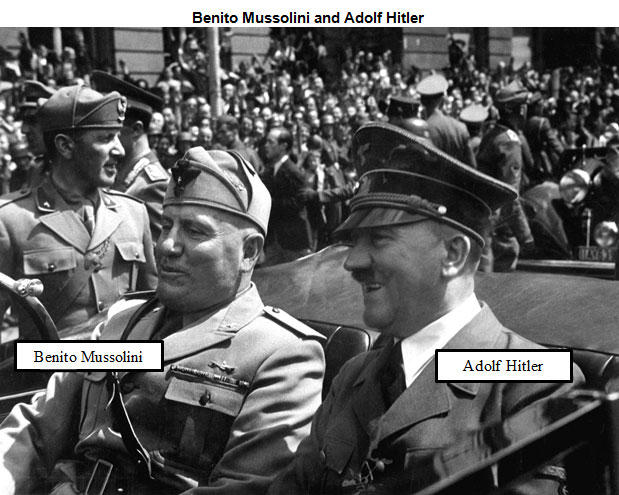
Many of the world’s conflicts have produced some of the most important military leaders of the world. These leaders have used military skill and leadership to impact major issues and events. Many military leaders have made important decisions that have changed the history of the world.
Benito Mussolini, fascist leader of Italy, came into power in 1921 after the end of World War I. The poverty and political instability of postwar Europe left its mark on Italy. This political state gave rise to a period of extreme nationalism and the opportunity for a new leader to bring order to the country.
Mussolini ruled Italy by creating a one-party system and making himself leader. His party used violence and propaganda to control the nation. Many joined his movement, and other nations began similar movements. Adolf Hitler and his Nazi party began their movement in Germany.

From 1939 to 1945, the world was locked in a bitter battle that stretched across several continents. The conflict was initiated by Adolf Hitler, the totalitarian leader of Germany, who took control of the country using the maltreatment of Germany after World War I as his excuse. Hitler subsequently expanded his empire by overtaking most of Europe. Through policies of appeasement and the fear of being Hitler’s next target, most countries ignored his actions and allowed his expansion to take a deadly and destructive turn.
In 1939, these two leaders committed their respective countries in an agreement called the Pact of Steel, a pact in which each party promised to support the other in the event of a war.
![]() This picture was taken of "The Big Three," leaders of the United States, Great Britain, and the Soviet Union. Click on each one to learn more about their leadership during World War II.
This picture was taken of "The Big Three," leaders of the United States, Great Britain, and the Soviet Union. Click on each one to learn more about their leadership during World War II.
As Hitler’s terror spread, the countries of Great Britain and France were forced to declare war on Germany. Alliances were formed, and then a full-fledged world war began. While Germany, Italy, and Japan comprised the Axis Powers, Great Britain, France, the Soviet Union, and the United States made up the Allied Powers.
The leaders of the Allied Powers were not only political leaders, but, more importantly, they were decisive military leaders. These leaders worked together to end a war that was simultaneously being fought in various locations worldwide. First, the Allies defeated the Axis Powers in the European Theater, and then they focused on securing a victory in the Pacific Theater.
Sources of images used for this section as they appear, top to bottom: